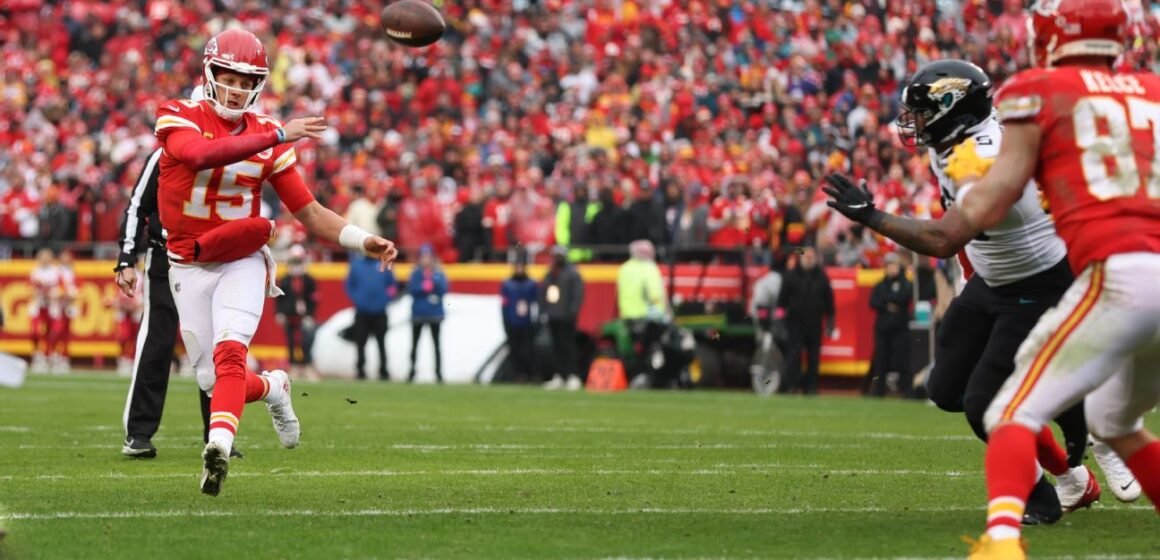The Diminishing Allure of the Long Pass in Modern Football
In recent years, there’s been a perceptible shift in the NFL’s passing game. The allure of the long, thrilling vertical pass that once captivated fans and analysts alike is becoming less frequent. But what has prompted this trend? Is it a mere temporary deviation or a more profound transformation in strategy?
The Super Bowl LVII Phenomenon
In one of the most talked-about Super Bowl moments, Marquez Valdes-Scantling, a wide receiver for the Kansas City Chiefs, showcased his skill. Racing down the field, he managed to outpace James Bradberry, the cornerback for the Philadelphia Eagles. Positioned almost 30 yards away, Valdes-Scantling appeared in an optimal position for a game-changing play.
Yet, Patrick Mahomes chose a different tactic. Instead of utilizing the long pass, he connected with Travis Kelce underneath, resulting in a 22-yard reception. Out of Mahomes’ throws during Super Bowl LVII, this was the longest completion. Remarkably, this quarterback, known for his ability to effortlessly cover 70 yards, opted for short passes, with only four surpassing 15 air yards.
The Evolution of Mahomes and the Changing Landscape of NFL Strategy
Patrick Mahomes’ transformation in approach provides an illustrative example of the broader trend in the NFL. Earlier, Mahomes’ tactic often involved deep throws, especially leveraging the speed of players like Tyreek Hill. However, as defenses adapted, Mahomes changed his game.
This adaptation was most noticeable during the 2021 season, where Mahomes confessed to having faced a plethora of deep coverages. His learning curve involved understanding when to harness the power of underneath plays, ensuring steady progress down the field.
Mahomes isn’t alone in this shift. Recent statistics underline that the 2022 regular season saw a decline in the number of deep balls attempted — the lowest since 2006.
The Role of Defense in the Changing Dynamics
One cannot discuss this transformation without recognizing the role of defense in shaping offensive strategies. Players like Patrick Peterson recall an era where elite defenses had cornerbacks that posed a singular challenge to quarterbacks. The ethos was simple: your best against ours.
However, the defensive strategies have now evolved. Gone are the days of cornerbacks like Darrelle Revis who dominated one side of the field. The contemporary defense is more intricate, often employing two-high looks with both safeties positioned deep. This shift makes it increasingly challenging for receivers to find space for vertical routes.
Moreover, defenses have transitioned from static zone coverages to dynamic man-match coverages. This evolution also considers the increasing agility and skill of pass rushers, aiming to force the quarterback into holding the ball longer.
As 49ers coach Kyle Shanahan points out, the challenge is in the defenses’ ability to take away the allure of the deep ball, pushing teams to reconsider their offensive strategies.
Adapting to the New Era: The Bengals’ Approach
A case study in adaptation is provided by the Cincinnati Bengals. In their journey tothe Super Bowl, they initially relied on deep balls, with Joe Burrow making significant touchdowns. However, as defenses adapted, the Bengals had to recalibrate their strategy.
Coach Zac Taylor’s subsequent modifications in the 2022 offensive strategies were evident. Recognizing the shifts in defensive plays, the team realigned their approach, minimizing their reliance on the deep balls that had once been their signature.
In Conclusion
The diminishing frequency of long passes in the NFL is not merely a blip on the radar but appears to be a more thoughtful strategic shift. As defenses evolve in complexity and skill, offenses are recalibrating their strategies to stay ahead in the game. While the exhilaration of a long pass might become rarer, the tactical depth and nuance that the game is gaining promise an equally thrilling future for the NFL.


Leave a Reply